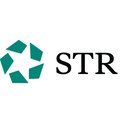A Deep Dive Into Japan’s Road To Recovery
While many nations have lifted COVID-19-related limits on travelers, entry restrictions for international travelers in Japan remain in place. However, the Japanese government has launched a "Go to Travel" campaign to promote domestic travel and help boost local businesses. But while hotel occupancy has improved thanks to this government campaign, levels remain well below pre-pandemic levels with full recovery not expected for years.
COVID-19 "second wave" & Go to Travel campaign impact
The Go to Travel campaign provides subsidies of up to 50 percent on transportation, hotels, restaurants, tourist attractions and shopping costs. Tokyo, however, has been excluded from this campaign due to the increasing number of COVID-19 cases in the city.
To measure the impact of the campaign and second-wave concerns in the country, it is important to first look back.
After the government pushed cancellation of all major events in the country at the end of February, March occupancy dropped to 33%. However, after the state of emergency was implemented in seven prefectures including Hokkaido on 7 April, monthly occupancy dropped even lower in April and May (14%), the lowest occupancy level for any months in STR's Japan database.
After the state of emergency ended during the last week of May, June showed a slow recovery pace with normal weekly patterns, including Saturday producing the highest occupancy level of the week—as we've seen in other markets around the globe.
On 22 July, the day after the campaign Go to Travel launched, and on 23 July, the first day of a four-day weekend, Japan reached 46% daily occupancy. However, Tokyo occupancy dropped in July due to the concerns regarding the spread of new cases.
Despite the government campaign to support domestic travel and the occupancy increase in July, August preliminary data shows lower levels similar to June due to increased concern regarding the spread of the virus.
Regional markets are leading the recovery
As we've seen in other markets around the globe, regional markets in Japan are leading the recovery as Tokyo and Osaka have lagged. Resort areas that can be reached by car from Tokyo and Osaka, such as Kanto and Kansai, have seen a high Go to Travel campaign impact.
Niseko: Where does recovery stand?
Niseko has seen steady occupancy increases. On 23 July, the market posted a 51.7% occupancy level, its highest daily occupancy level since March. The market saw an occupancy increase during July thanks to the Government Go to Travel campaign.
Conclusion
Despite the Japanese government efforts to support and promote domestic travel, the country's rising COVID-19 caseloads appear to have slowed recovery.
About STR
STR provides premium data benchmarking, analytics and marketplace insights for the global hospitality industry. Founded in 1985, STR maintains a presence in 15 countries with a North American headquarters in Hendersonville, Tennessee, an international headquarters in London, and an Asia Pacific headquarters in Singapore. STR was acquired in October 2019 by CoStar Group, Inc. (NASDAQ: CSGP), the leading provider of commercial real estate information, analytics and online marketplaces. For more information, please visit str.com and costargroup.com.


